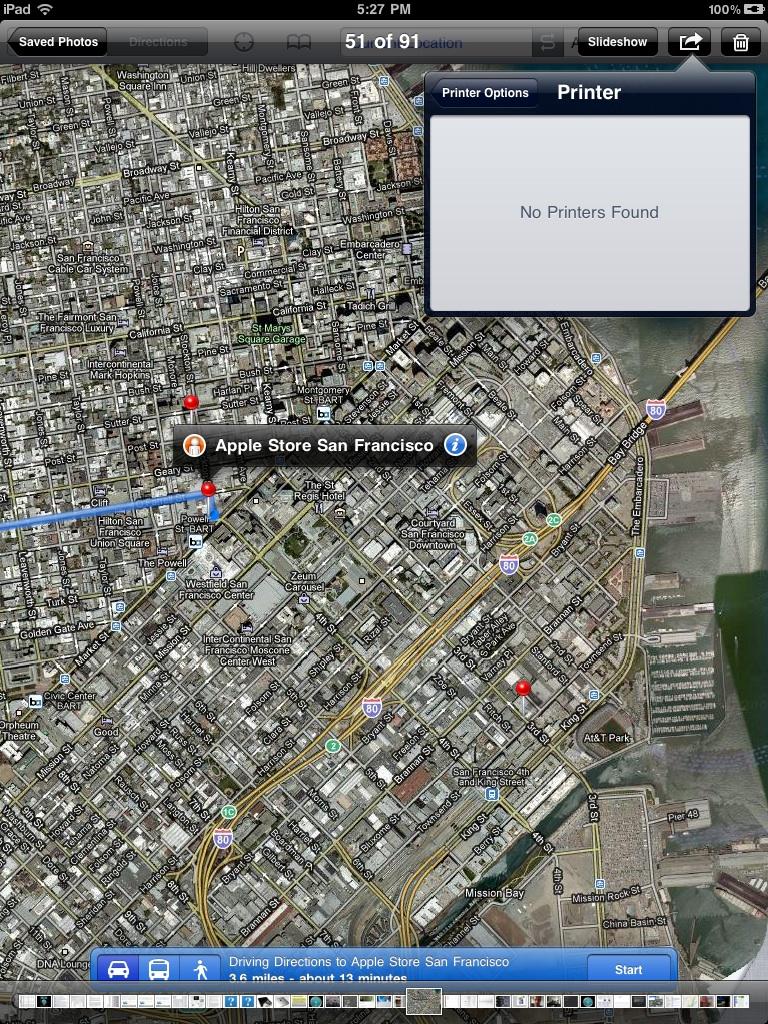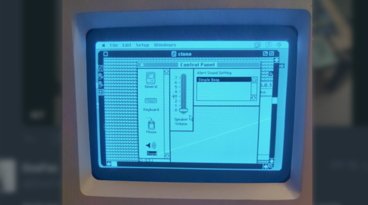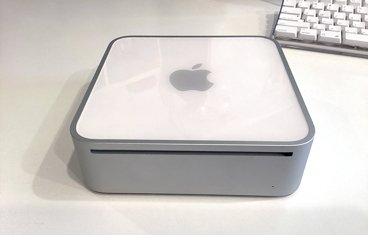Inside AirPrint: Apple's printing system for iOS
HP's ePrint
Unlike their Mac OS X parent, iOS devices prior to version 4.2 currently lack a printing architecture. Most other smartphone and mobile devices also lack a dedicated printing system, unless they attempt to run a full sized OS like Windows 7 or a desktop PC distribution of Linux. To solve this issue (and sell more printers), HP developed a mobile printing system for mobile devices called ePrint, which it unveiled this summer.
The concept behind ePrint is simple: rather than requiring mobile devices to include a printing subsystem and load the megabytes of device-specific drivers required by conventional desktop printers, mobile devices can just email their documents to an ePrint printer queue, which then prints the document on behalf of the device.
HP sells a few new printers with an ePrint queue built in. Essentially, the printer assigns itself a random email address (which can be optionally configured to only accept print jobs from specific users, to avoid print spam from other sources). When it receives an email with a standard document attachment (such as a graphic, Word document, or PDF), the ePrint-enabled printer automatically prints it out. It can also reply with a status email to notify the user that the job printed properly, or if there was an error.
HP's enterprise ePrint for BES
HP also worked with RIM to develop enterprise ePrint support for BlackBerry devices. Given that RIM's corporate business users typically use their devices in conjunction with a BlackBerry Enterprise Server, it's no surprise that the two created a "cloud based" system that enables BlackBerry devices to send ePrint jobs to local printers via a network print queue.
HP's ePrint Enterprise system uses the same email-based delivery system to get print jobs from a mobile device to the printer. However, because the ePrint queue is running on a network server, it can work with any printer that supports HP's PCL (Printer Command Language), a generic printer protocol comparable to PostScript, developed by HP, and supported by a variety of printer makers.
Users still need to discover the available printers on their own, although HP's print app for BlackBerry is designed to look up publicly available printers in the immediate vicinity via GPS. A company may set up a series of printers configured to accept jobs from a network queue that itself accepts email-based ePrint jobs, or a hotel might set up an email address for its guests to send print jobs to, and so on. However, this solution requires a dedicated network server designed to accept ePrint jobs, and/or specially designed ePrint-ready printers. It also requires active Internet access, due to being email-based.
Apple's AirPrint for iOS
Apple didn't have to do anything to support HP's ePrint system; HP itself planned to deliver an iOS app that would deliver files to ePrint email addresses, but iOS users can already attach files to emails and send them to ePrint devices manually.
Rather than only supporting an email bridge to print however, Apple developed AirPrint as a way for apps to send print jobs centrally through Apple's new Print Center app, which manages job delivery to any available printers. Users don't have to mess around with emailing their documents to a special printer address, or using a third party app to manually set up a print job. Apple created APIs in iOS 4.2 to enable developers to add AirPrint features to their apps.
AirPrint can send jobs to HP's ePrint devices, and apparently to server queues designed to support ePrint Enterprise printing (both of which only require sending an attached file to a print server). It can also discover (via Bonjour) and send (via WiFi) print jobs directly to local printers supporting ePrint.
AirPrint via Printer Sharing
AirPrint was also intended to send print jobs from iOS devices to printer shares on a Mac or Windows PC. This prevents the need to have a specially designed ePrint printer, as the printer itself is no longer handling the print job. This is closer in practice to HP's ePrint Enterprise system, where the shared printer on the remote PC is handling the job as a network print queue. Printer Sharing in Mac OS X Snow Leopard 10.6.5 was supposed to introduce this feature to support printing from iOS devices to any printer set up on a Mac on the local network.
With a networked Mac or PC supplying the printer drivers and doing the heavy lifting, iOS is free to simply send out a print job that any shared printer queue can render in a format specific to the printer it is configured for, including PostScript, PCL, or a dedicated proprietary format of some kind. AirPrint is designed to work with essentially any printer a user has.
On its website, HP clarifies, "Apple's AirPrint allows iPhone, iPad and iPod touch customers to print wirelessly to a local printer on their wireless network through an embedded OS print function. HP ePrint allows for printing from anywhere in the world from any mobile device to an HP ePrint enabled printer using the HP cloud - that means the customer can attach a file or document to an email and send it to the printer's individual email address. Both solutions remove the need for drivers or software downloads."
AirPrint therefore does not appear to require a printer email address or Internet access to work. Users simply discover available ePrint printers locally, then send print jobs to them directly via WiFi. Without ePrint support on the printer itself, users would need to print through a Mac or PC hosting a shared print queue.
Reports of AirPrint legal dispute
A rumored controversy, however, maintains that Apple's soon to be released AirPrint has run into a patent issue, reportedly from App Store developer. This is purportedly why Apple was said to be pulling support for printing through shared printers on Macs or PCs from the public iOS 4.2 release, after including functional support for this in the GM build released to developers.
HP does hold a patent for "Computing device and methods for mobile-printing," but has not publicly asserted any claim to block Apple from allowing AirPrint to work with printers beyond its own, brand new ePrint-certified models.
Apple has however removed references to printing through shared desktop printer queues from its website, only saying that AirPrint will allow users to "print mail, photos, web pages, and more directly to a printer on a wireless network." That wording makes it sound like AirPrint has been scaled back to simply an integrated implementation of ePrint in iOS.
AirPrint legal dispute news to AirPrint developers
AppleInsider interviewed Ian Schenkel, the chief executive of EuroSmartz Ltd., a firm that sells a number of print-related applications on the App Store, including PrintCentral, Print n Share, CalPrint and PrintBureau. On Wednesday afternoon, PrintCentral was twelfth most popular paid application in the "Business" category on the iPhone, and ranked fourth among iPad apps.
Schenkel told AppleInsider that his company is not suing or threatening to sue Apple. "There's no litigation pending from our company, nor is there any intention of any pending litigation," he said. Schenkel said his company works closely with Apple and has a great relationship with them.
Schenkel added that the launch of AirPrint is not a threat to his applications, which allow users of iOS devices to send documents to WiFi-enabled printers. In fact, EuroSmartz has already added the AirPrint protocol into its software, and those applications are awaiting Apple's approval for release on the App Store. In addition to printing direct to most WiFi printers, the company's software also allows printing over 3G.
"AirPrint is very much another extension of what we are already doing and complements what we offer today," Schenkel said, noting that today was the first he had heard of any potential delay of shared printer functionality in AirPrint. Schenkel and his employees have been tracking the story online, but said they do not know about any legal situation surrounding AirPrint are unaware of any potential litigation.
AirPrint currently appears limited to ePrint, Windows 7
Today's public release of Mac OS X 10.6.5 does not appear to include support for AirPrint through Printer Sharing, meaning that while iOS devices will likely get AirPrint support in the upcoming iOS 4.2 update, they still won't be able to print to shared printer queues set up on a Mac, which would appear to limit AirPrint to late-modeled printers specifically supporting HP's ePrint feature.
After installing the public release of Mac OS X 10.6.5, AppleInsider could not get either an iPad or iPhone 4 running the GM developer build of iOS 4.2 to recognize a shared printer on the network. However, users with Windows 7 have reported being able to set up a printer share that is visible and usable by iPads running the GM developer build of iOS 4.2.
Apple may deliver an update that enables AirPrint-compatible Printer Sharing in Snow Leopard if the issue is simply a last minute technical issue and not being blocked by patent disputes. The company has pulled advertised features from Mac OS X in the past without explanation, only to add them back at a later time. One example of this was wireless Time Machine backups to Time Capsule. At the same time, Apple has also abandoned advertised efforts over patent issues after investing significant resources, such as it recently did with ZFS support.
 Daniel Eran Dilger
Daniel Eran Dilger














 Amber Neely
Amber Neely
 Thomas Sibilly
Thomas Sibilly
 AppleInsider Staff
AppleInsider Staff
 William Gallagher
William Gallagher
 Malcolm Owen
Malcolm Owen
 Christine McKee
Christine McKee










54 Comments
That was what I was afraid of...HP printers only. Uggh! I have a Brother wireless that I very happy with. Dratts!
Best
Apple is d00med! LOL I think it will be in the GM pubic release of 4.2. Just last minute snags. Bonjour printing on Mac is an absolute godsend. I can't imagine them releasing 4.2 without this much vaunted feature.
Don't panic, this feature will work eventually. Jobs probably decided it didn't work well enough, and didn't want to listen to you guys griping about it.
As Apple is a perfectionist-I think it's better they wait and get it right the first time rather than release it on time just for the sake of being on time. IMHO Apple wants it to be a perfect '10' when its released to the public Patent violation notwithstanding of course-that's a whole other ball game.
I can't imagine them releasing 4.2 without this much vaunted feature.
Imagine it. Unless you got one those ePrint enabled thingies.....it ain't working.